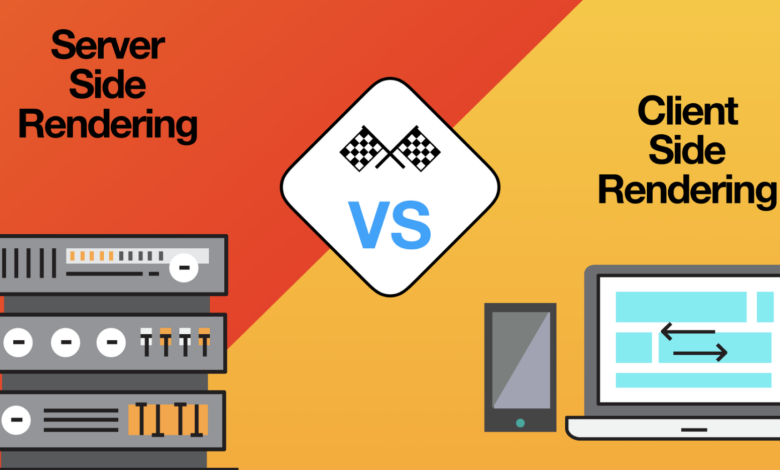Server-Side Rendering vs Client-Side Rendering Explained

When building modern web applications, developers often face a key decision: should the application render content on the server-side (SSR) or the client-side (CSR)?
Both approaches have advantages and drawbacks, and choosing the right one can dramatically affect performance, SEO, and user experience.
In this article, we’ll explore what SSR and CSR are, compare their pros and cons, and help you decide which approach best suits your project.
1. What is Server-Side Rendering (SSR)?
- Definition: The server generates the HTML for each request and sends a fully rendered page to the browser.
Workflow:
- Browser requests a page.
- Server processes logic, queries data, and renders HTML.
- Fully rendered HTML is sent to the browser.
Example: Traditional frameworks like PHP, Ruby on Rails, and newer SSR frameworks like Next.js.
2. What is Client-Side Rendering (CSR)?
- Definition: The server sends a minimal HTML shell, and JavaScript (usually a framework like React, Vue, or Angular) handles rendering in the browser.
Workflow:
- Browser executes JS, fetches data, and builds the UI dynamically.
- Server sends HTML + JavaScript bundle.
- Browser requests a page.
- Example: Single Page Applications (SPAs).
3. Key Differences Between SSR and CSR
| Feature | SSR | CSR |
|---|---|---|
| Initial Load Time | Faster (HTML is pre-rendered) | Slower (JS needs to execute) |
| SEO | Better (search engines crawl HTML directly) | Worse unless prerendering is used |
| User Experience | Immediate content but slower navigation | Slower initial load, faster navigation after load |
| Server Load | Higher (server does more work) | Lower (client does more work) |
| Caching | Easier with CDNs | Complex (dynamic rendering in browser) |
4. Benefits of Server-Side Rendering
- SEO-Friendly: Search engines crawl pre-rendered content.
- Fast First Paint: Content appears quickly to users.
- Better for Content-Heavy Sites: Blogs, e-commerce, news platforms.
5. Benefits of Client-Side Rendering
- Rich Interactivity: Great for dynamic UIs and apps.
- Faster Navigation: Once loaded, moving between pages is seamless.
- Scalable: Offloads work to the client rather than server.
6. Challenges of SSR
- Higher server costs.
- Slower navigation between pages (full reloads).
- Requires caching and optimization strategies.
7. Challenges of CSR
- Poor SEO without prerendering or server-side generation.
- Slower initial page load.
- Dependent on JavaScript execution (bad for low-powered devices).
8. Hybrid Approaches: Best of Both Worlds
Modern frameworks allow blending SSR and CSR for optimal results:
- Next.js (React): Supports SSR, CSR, and static site generation (SSG).
- Nuxt.js (Vue): Similar flexibility with SSR and CSR.
- SvelteKit: Enables SSR, CSR, and edge rendering.
9. Real-World Use Cases
Use SSR for:
- Content-heavy websites.
- Blogs, news sites, e-commerce (SEO and performance matter most).
Use CSR for:
- Situations where SEO is less critical.
- SaaS dashboards, social media platforms, or apps with complex interactivity.
10. Conclusion
The choice between Server-Side Rendering and Client-Side Rendering depends on your project’s priorities.
- Choose SSR if SEO, fast first load, and static content delivery are crucial.
- Choose CSR if you’re building a highly interactive app with rich client-side features.
- In many cases, hybrid rendering (using frameworks like Next.js) offers the best of both worlds.
Ultimately, mastering both SSR and CSR ensures you’re ready to build applications optimized for performance, scalability, and user experience.

